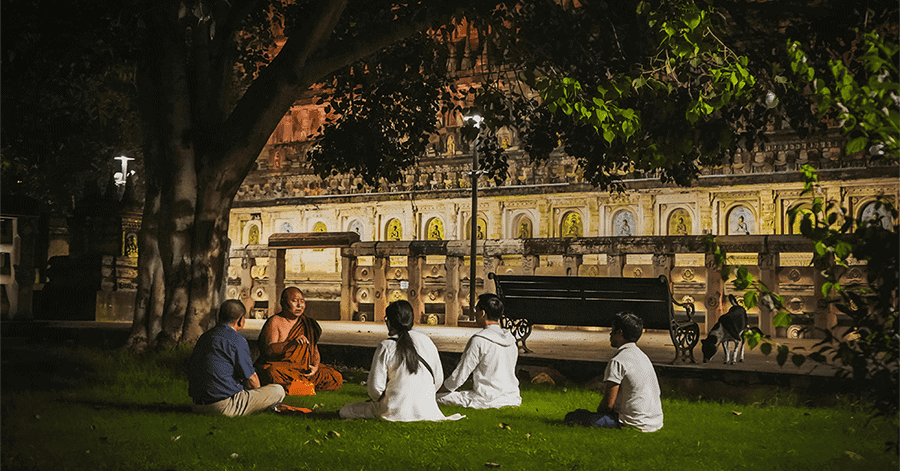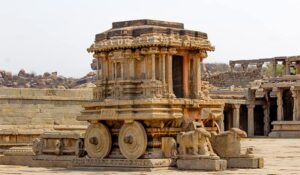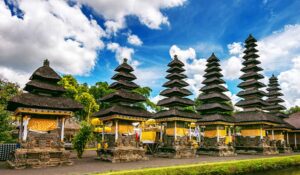Gaya is an Indian city in the middle of Bihar that is full of spiritual and historical importance. Buddhists worldwide worship Gaya as the place where Siddhartha Gautama attained enlightenment under the Bodhi Tree. Tourists come to Gaya. Through its intricate web of history, culture, and faith, Gaya is a fascinating place for tourists who want to explore its depths. If you’re planning a trip to this sacred city, here are 10 must-see places to visit in Gaya, Bihar.
12 Places to Visit in Gaya
1. Mahabodhi Temple:
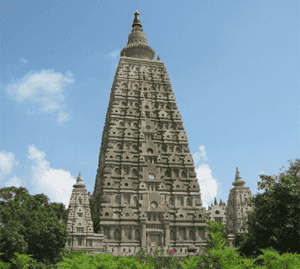
It is undoubtedly the crown jewel of Gaya and a UNESCO World Heritage Site. Built in the 3rd century BCE by Emperor Ashoka. This sacred shrine marks the spot where Lord Buddha attained enlightenment under the Bodhi tree. The temple complex exudes tranquility and spirituality, with its magnificent architecture and serene ambiance attracting pilgrims and tourists from across the globe. Take a stroll around the temple grounds, offer prayers, and soak in the peaceful atmosphere that permeates this revered site.
2. Vishnupad Temple:
The Vishnupad Temple is one of the most ancient temples in Gaya. It is believed to enshrine the footprints of Lord Vishnu. According to Hindu mythology, the temple stands at the spot where Lord Vishnu placed his foot on Earth, leaving an imprint.
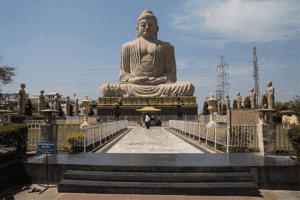
3. Great Buddha Statue:
The Great Buddha Statue, also known as the 80-foot Buddha statue, is a magnificent structure situated near the Mahabodhi Temple Complex. Crafted in the meditative posture, it symbolizes peace and compassion. The statue is a prominent landmark in Gaya and offers a serene ambiance for contemplation.
4. Bodhgaya Archaeological Museum:
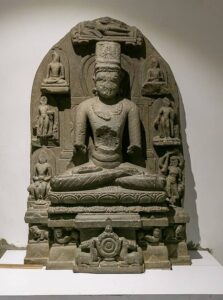
The Bodhgaya Archaeological Museum is a must-visit place. It includes a magnificent collection of artifacts and sculptures recovered from several archeological sites in the region. Exhibits dating back to the Maurya and Gupta periods offer insights into the artistic and cultural history of ancient India. Visitors can admire intricately carved statues of Buddhist deities and artifacts associated with Lord Buddha’s life and teachings.
5. Barabar Caves:
The Barabar Caves, dating back to the Maurya period, are among the oldest rock-cut caves in India. These ancient caves hold significant historical and architectural importance, with inscriptions dating back to Emperor Ashoka’s reign. The caves served as retreats for Buddhist monks and are renowned for their unique architectural features.
6. Dungeshwari Cave Temples:
The Dungeshwari Cave Temples, located about 12 kilometers from Gaya, hold great spiritual significance. It is believed that Lord Buddha underwent years of intense meditation and self-mortification in these caves before attaining enlightenment. The site attracts pilgrims seeking spiritual solace and introspection.

7. Thai Monastery:
The Thai Monastery, also known as Wat Thai Temple, exemplifies the strong cultural ties between India and Thailand. It features traditional Thai architecture and serves as a center for Buddhist learning and meditation. Visitors can explore the monastery’s serene surroundings and participate in meditation sessions
8. Japanese Temple
The Japanese Temple, also known as the Indosan Nippon Japanese Temple, is a serene sanctuary adorned with traditional Japanese architecture and lush Zen gardens. It serves as a place of worship and meditation for followers of Buddhism. Visitors can experience a sense of tranquility amidst the beautifully landscaped gardens.
9. Pretshila Hill:
Pretshila Hill, also known as Brahmayoni Hill, offers panoramic views of the surrounding landscape and is believed to have mythological significance. According to legend, it is the spot where Lord Buddha preached the Fire Sermon to his disciples. The hilltop provides a peaceful retreat for meditation and reflection.
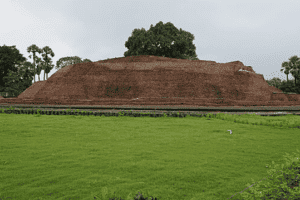
10. Sujata Kuti:
Sujata Kuti is a small village near Gaya, known for its association with an incident from Lord Buddha’s life. It is believed that a young woman named Sujata offered rice pudding to Buddha before his enlightenment. Pilgrims visit the site to pay homage to Sujata and experience the tranquility of the surroundings.
11. Muchalinda Lake:
Muchalinda Lake, named after the Naga king Muchalinda. It is a serene water body located near the Mahabodhi Temple. According to Buddhist mythology, it is believed that Lord Buddha spent seven days in meditation under a giant Muchalinda tree near the lake. Visitors can enjoy a tranquil boat ride on the pristine waters of the lake while soaking in the serene surroundings. The lush greenery and tranquil ambiance make it a perfect spot for relaxation and introspection.
Planning Your Gaya Getaway:
The most pleasant time to visit Gaya is during the winter months. October to March when the weather is nice and sunny. However, if you’re keen on experiencing the lively Hindu festivals, plan your trip around Diwali or Durga Puja.
Accommodation:
Gaya offers a diverse range of accommodation options, catering to all budgets and preferences. From budget-friendly guesthouses to luxurious hotels, you’re sure to find a place that suits your needs. For a truly immersive experience, consider staying near the Mahabodhi Temple or the Vishnupad Temple.
Transportation:
Gaya is well-connected by air, train, and road. The Gaya International Airport offers regular flights to major Indian cities. The Gaya Junction railway station is a primary stop on the Indian Railways network. You can also reach Gaya by road from nearby cities like Patna and Varanasi. Also, frequent trains and buses provide convenient access to neighboring towns and cities.
Conclusion
Gaya is a city steeped in spirituality and history, offering a myriad of attractions for pilgrims and tourists alike. From ancient temples and sacred sites to museums and vibrant markets, Gaya provides a unique cultural experience that leaves a lasting impression on visitors.

